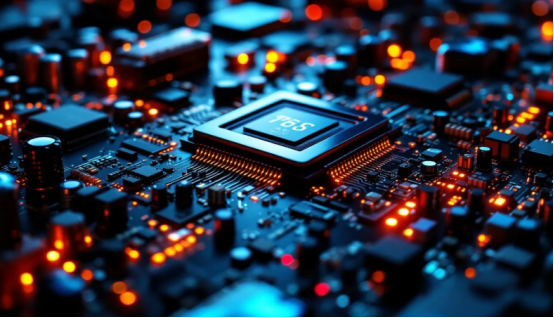Program Burning Methods, Tools & Best Practices in PCB Assembly
Introduction
Program burning involves writing software or firmware into an integrated circuit (IC) to enable its operation. Without this step, electronic devices would not function. In PCB assembly, program burning is essential for transforming ICs into useful components that perform specific tasks. This guide covers the methods, tools, and best practices for effective program burning.
Key Takeaways
·Program burning is essential for enabling integrated circuits to perform designated functions in electronic devices, impacting device reliability and efficiency.
·Common methods for program burning include device programming, in-system programming, and in-circuit programming, each suited for different production and debugging needs.
·Best practices in program burning encompass selecting appropriate programming methods, ensuring firmware security, and verifying data integrity to minimize errors and enhance
What is Program Burning?

Program burning is the intricate process of writing software or firmware into an empty integrated circuit (IC) to enable its operation. This transformation is akin to breathing life into a blank piece of silicon, turning it into a functional controller capable of executing specific tasks. The magic lies in the software code written during this process, which instructs the IC on its functions, making it an essential step in the IC and PCB assembly process. To achieve this, engineers must write code that effectively communicates with the hardware.
This process involves embedding essential data, including files like fonts and images, which enhance user experiences. Understanding program burning is crucial for professionals in embedded systems, microcontrollers, or FPGA development. It bridges potential and performance, ensuring devices operate as intended.
Importance of Program Burning in PCB Assembly

Program burning is the linchpin that makes integrated circuits functional, enabling them to perform the specific tasks for which they were designed within electronic devices. Without this critical step, devices would remain inert, highlighting the indispensable nature of programming ICs in ensuring device functionality. This process enables the creation of custom behaviors and functions, aiding in debugging and system optimization.
An effective implementation of program burning can lead to significant improvements in device functionality and reliability. This process is not merely about making something work; it’s about making it work well, efficiently, and reliably. The role of program burning in PCB assembly is thus pivotal, transforming raw components into seamlessly functioning devices.
Types of Programmable ICs
Understanding the types of programmable ICs is crucial for anyone involved in IC programming and microcontroller programming. Microcontrollers, for instance, are compact integrated circuits designed to govern specific operations in embedded systems, including various integrated circuits. They are the brains behind many everyday electronic devices, from household appliances to automotive systems, and it is essential to program microcontrollers effectively.
On the other hand, FPGAs (Field-Programmable Gate Arrays) offer a grid of logic gates that users can configure, providing flexibility for complex designs. EEPROMs (Electrically Erasable Programmable Read-Only Memories) are used in applications requiring data retention after power loss, thanks to their ability to be reprogrammed electrically.
CPLDs (Complex Programmable Logic Devices) contain multiple programmable logic elements and are designed for larger logic circuits than simpler devices. Each IC type offers unique capabilities for PCB designs, catering to diverse programming needs.
Common Program Burning Methods
There are several methods used in program burning, each with its unique advantages and applications. These methods include device programming, in-system programming (ISP), and in-circuit programming (ICP). Factors like production volume, cost, and design complexity influence the choice of method.
Each method has its benefits, such as ease of updates and debugging in ISP or mass programming in device programming.
Device Programming
Device programming encompasses offline programming, which allows for the mass programming of ICs before assembly on PCBs. This method is particularly beneficial in high-volume production environments where efficiency is paramount. On-Board Programming (OBP) integrates programming into automated test equipment or production machines, facilitating mass programming in automated manufacturing settings. Choosing the right programmer depends on the stage of use, whether for development, production, or field maintenance.
Offline programming and OBP are instrumental in ensuring that ICs are correctly programmed before they are incorporated into electronic devices. This pre-assembly programming helps streamline the production process and ensures that the ICs are ready for immediate use once mounted on the circuit boards.
In-System Programming (ISP)
In-System Programming (ISP) allows for the programming of integrated circuits while they are mounted on a circuit board. This method is particularly advantageous for updating firmware without needing to remove the IC from the circuit, offering a flexible and efficient solution for maintaining and upgrading electronic systems.
The role of In-System Programmers is vital in scenarios where frequent updates or debugging are required. ISP simplifies programming by allowing it without removing the ICs from system boards, reducing damage risk for the ic programmer.
In-Circuit Programming (ICP)
In-Circuit Programming (ICP) is another method used to program integrated circuits while they are mounted on the PCB. This approach is highly beneficial for debugging and allows for updates without desoldering components. ICP requires test points or pads connected to programming interface pins, making it a practical choice for development, field upgrades, and repairs.
Updating and debugging ICs directly on the board saves time and reduces the complexity of component removal and replacement. ICP thus ensures greater flexibility and efficiency in managing and maintaining electronic devices, including memory ics.
Essential Tools for Program Burning

The right tools are essential for successful program burning. Production programmers, optimized for speed and reliability, are ideal for high-volume tasks. Gang programmers allow for the concurrent programming of multiple identical ICs, making them valuable in production environments.
Choosing a programming tool requires considering its capabilities, interfaces, throughput, and specific software functionalities. Verifying a programmer’s compatibility with an IC by testing sample ICs is crucial. Proper ic programming tools enhance efficiency and ensure reliable and accurate programming.
Step-by-Step Process for Program Burning

The process of program burning involves several critical steps:
·Programmable ICs must have their control programs loaded before assembly on PCBs.
·This step involves loading pre-written code into a microcontroller or memory device.
·Bulk programming can occur offline before assembly using dedicated programmers.
·This approach ensures efficiency in high-volume production.
After transferring the program to the IC chip via a specialized device programmer, checksum verification or hash checks ensure data integrity. The final phase is testing the programmed chip to confirm its proper performance. This thorough process ensures that the devices operate as intended once assembled.
Best Practices for Program Burning
Reliable, secure, and efficient programming is crucial for successful IC programming. Best practices involve using automated programming systems to boost throughput and reduce manual handling risks. Protecting ICs from electrostatic discharge (ESD) and electromagnetic interference (EMI) during programming requires grounding techniques, wrist straps, ionizers, and shielded sockets.
Selecting the Right Programming Method
Several factors, including production volume, cost, and IC design complexity, influence the choice of programming language method. Compatibility between hardware and software versions prevents integration issues during programming requirements.
By carefully selecting the appropriate method, manufacturers can ensure that their IC programming process is efficient and reliable.
Ensuring Firmware Security
Firmware security is paramount in protecting intellectual property and preventing unauthorized access. Methods like AES-256 encryption secure sensitive firmware for ip protection.
Setting encryption parameters during burning enhances confidentiality and protects against unauthorized access.
Verifying Data Integrity
Verifying data integrity during program burning avoids logical errors and ensures functionality. Data checks like checksums confirm the programming output aligns with the intended source code.
This process involves comparing written data with original files post-programming, ensuring accuracy and reliability. Robust verification processes significantly reduce programming errors.
Common Challenges in Program Burning & Solutions
Program burning is often more critical than testing ICs, as it directly affects device functionality. Technical and operational challenges in IC programming require a systematic troubleshooting approach to enhance efficiency in program ics.
Effective solutions address these challenges and ensure successful programming outcomes.
Handling Code Bugs
Debugging techniques such as automated test equipment and in-circuit emulators efficiently identify and resolve code bugs. Reprogramming faulty components and analyzing root causes of failures address code bugs, ensuring functional and reliable programmable firmware in PCB assemblies.
This is critical for maintaining the overall performance of electronic devices.
Addressing Compatibility Issues
Synchronization tools and approaches to ensure compatibility include:
·Phase-locked loops, which often ensure hardware and software compatibility.
·Cross-platform development tools, which minimize compatibility issues across operating systems.
·Addressing hardware-software mismatches caused by outdated drivers or incompatible software versions, which is crucial for seamless programming.
Accelerating Production with Automated Systems

Automated programming systems enhance efficiency and reduce handling risks in high-volume manufacturing. They boost production speed and ensure consistent quality control during IC programming. Offline programming, allowing ICs to be programmed separately from the main production line, enhances efficiency and reduces bottlenecks.
Automated systems accelerate production and minimize manual programming errors, ensuring reliable, high-quality outputs. Proper planning and execution of programming methods can significantly boost production needs efficiency and perform specific tasks, as evidenced by a 30% increase in a notable case study.
Case Study: Successful Program Burning Implementation
One notable case involved a company that utilized in-system programming to reduce the time taken to load firmware updates on their PCBs. Collaborating with firmware developers addressed challenges during the program burning process, leading to successful implementation and improved efficiency, including the ability to store firmware code.
This case study underscores the importance of strategic planning and teamwork in overcoming challenges and achieving successful program burn. The lessons learned can serve as a valuable guide for other organizations looking to optimize their programming processes.
Summary
In summary, program burning is an essential process in PCB assembly and IC programming, transforming blank ICs into functional components that perform specific tasks. Understanding the various methods, tools, and best practices involved is crucial for ensuring reliable, secure, and efficient programming.
By following the guidelines and best practices outlined in this guide, manufacturers can optimize their programming processes, overcome common challenges, and achieve high-quality, reliable outputs. Embracing automated systems and verifying data integrity are key steps towards enhancing efficiency and ensuring success in IC programming.
FAQs
Q.What is program burning?
A.Program burning is the process of transferring software or firmware to an empty integrated circuit (IC), effectively transforming it from a blank state into a functional controller. This is essential for enabling the operation of electronic devices.
Q.Why is program burning important in PCB assembly?
A.Program burning is essential in PCB assembly because it guarantees that integrated circuits operate according to their intended functions, ensuring the overall reliability and functionality of electronic devices.
Q.What are the common methods of program burning?
A.The common methods of program burning are device programming (offline programming), in-system programming (ISP), and in-circuit programming (ICP). Each method has its specific applications and advantages depending on the requirements of the project.
Q.What tools are essential for program burning?
A.Essential tools for program burning include production programmers, gang programmers, automated programming systems, and specialized software for loading and verifying firmware. These tools ensure efficient and accurate programming processes.
Q.How can firmware security be ensured during program burning?
A.To ensure firmware security during program burning, utilize AES-256 encryption to encrypt the firmware and establish robust encryption parameters. This approach effectively protects the integrity and confidentiality of the firmware.
Author: Jack Wang
